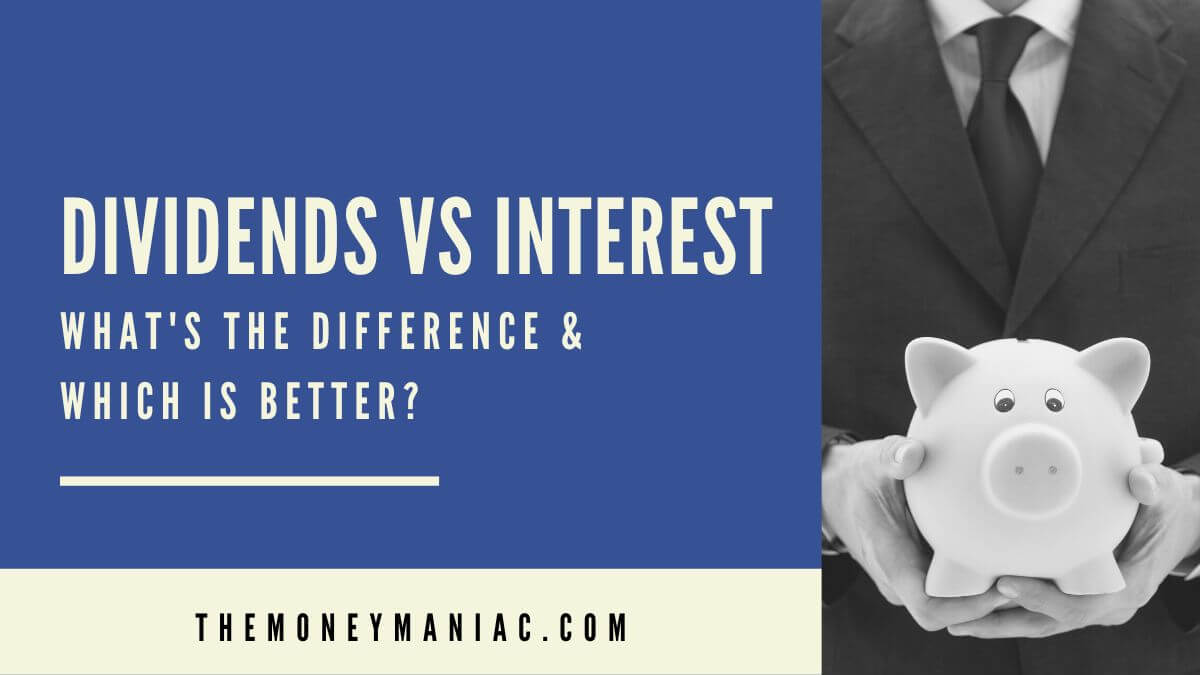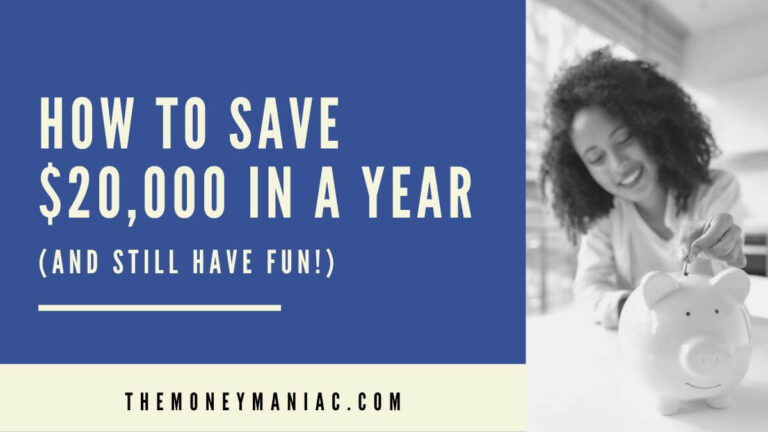Both dividends and interest are excellent sources of passive income. But are there any nuances between the two that investors should be aware of? And is one better than the other?
The short answer is… Yes! But it depends on how your portfolio is constructed. And the long answer is… just a short scroll away.
So if you are considering purchasing dividend-paying stocks or interest-bearing assets, this guide is for you.
We will unravel all of the important differences between dividends vs. interest. And we will help you answer the most pressing question: “Which one is better to invest in?”
What Are Dividends?
Dividends are payments made by a corporation to its shareholders, usually in the form of cash.
When you own shares in dividend-paying stocks or invest in Real Estate Investment Trusts (REITs), you receive a portion of the company’s profits. These profit distributions are made in the form of dividend payments.
While most investors are familiar with cash dividends, there are actually 7 types of dividends that companies can issue to shareholders.
- Cash Dividends: The most common type. Here companies distribute earnings in cash. For example, if a company declares a $1 dividend, and you own 100 shares, you would receive $100.
- Stock Dividends: Instead of cash, companies can issue additional shares. If the company issues a 5% stock dividend, you would receive an extra 5 shares for every 100 shares you own.
- Property Dividends: These are far less common than cash or stock dividends, but they do exist. Companies may distribute physical assets to their shareholders. This could be anything from products they manufacture to real estate.
- Scrip Dividends: When a company is low on cash but still wants to reward its shareholders, it might issue promissory notes. These promissory notes are issued in the form of certificates that give shareholders the option to take either a cash dividend at a later date or receive additional shares of stock (typically at a reduced price) now.
- Special Dividends: Companies may issue these one-time dividends after selling off a division or recording an unusually profitable year.
- Bond Dividends: These occur when a company issues bonds to shareholders. Think of them as a company IOU, with interest.
- Liquidating Dividends: These are declared when a company is winding up operations. It is the final payout after selling off all assets and settling all debts.
The Lowdown on Interest Income
Interest income is the cash you earn from lending out your money. This form of passive income can be earned inside of a bank savings account, by buying bonds, or even through peer-to-peer lending platforms.
And unlike dividends, which aren’t mandatory, companies must make their interest payments or risk default.
Some common types of debt investments that pay interest include:
- Government and corporate bonds
- Real estate contracts
- CDs
- Savings accounts
- Debt funds
Before purchasing an interest-bearing investment, it’s important to understand the types of interest you can receive. Here are the 7 kinds to be aware of:
- Simple: Simple interest is calculated on the loan’s principal balance and does not include any compounding. For example, if you invest in a one-year $1,000 bond that pays 5% interest, you will receive $50 at the end of the year.
- Compound: This is interest paid on both the principal balance and any accumulated interest from previous loan periods. For example, if you park your money in a savings account that pays 5% interest compounded daily, you would receive $51.30 at the end of the year (instead of $50).
- Effective: The effective annual interest rate takes into account the benefits of compounding. It is also known as the APY or Annual Percentage Yield. In the example above, the APY for a savings account that pays 5% annual interest compounded daily would be 5.13%.
- Fixed: A fixed interest rate remains constant for the life of the loan.
- Variable: A variable rate can change during the life of the loan based on an underlying benchmark or index, like the CPI (Consumer Price Index) or Fed Funds Rate.
- Real: Real rates have been adjusted to account for the effects of inflation. For example, if you have a bond that pays 6% per year and inflation is running at 3.5%, your real interest rate would be ~2.5%.
- Accrued: This represents the accumulated interest on an investment that has not yet been paid.
Dividends vs. Interest: Which Is the Better Investment?
So how do you decide which form of income is right for you? Here are three main differences between dividends vs. interest to consider before adding either to your portfolio.
1) Timing of Distributions
Dividends are usually paid quarterly. Interest payments, on the other hand, are often distributed semi-annually or annually.
For retirees or those relying on this income to cover expenses, this distinction can be quite important. Of course, you can plan around this either way. But if you like the safety of more frequent income, consider dividend-paying investments over interest-bearing investments.
2) Risks Involved
There’s no obligation or requirement forcing a company to make dividend payments. This means that they can be reduced or eliminated at any time if the company performs poorly.
However, companies (and governments) always have to make their interest payments. Otherwise, they risk default which could lead to:
- A decrease in credit ratings
- Higher borrowing costs in the future
- Loss of investor confidence
- Potential legal actions by bondholders
For this reason, interest payments are considered more dependable than dividends — especially those from highly rated issuers.
3) Tax Implications
In general, the government treats interest and dividend income as regular income and taxes them accordingly. However, there are a few exceptions.
Interest received on many types of government bonds may be exempt from federal or local taxes. Also, taxes on dividend payments have a maximum tax rate of 20% if you meet certain income limits and stock-holding periods. These are known as qualified dividends.
For an ordinary dividend to qualify, you must have owned the stock for at least 61 of the 121 days beginning 60 days before the ex-dividend date. But don’t worry if that seems complicated! Your broker is required to sum up all of your qualified dividends in box 1b on form 1099-DIV.
Then, depending on your income, your dividend tax rate will be 0%, 15%, or 20%. For example, in 2023 you can pay no taxes on qualified dividends if you earn less than $44,626 as a single filer (or less than $89,251 as a joint filer). In 2024, these limits jump up to $47,025 and $94,055 respectively.
Note: Dividends paid by REITs are always considered ordinary dividends and taxed as regular income.
The Hybrid Approach
Both dividend and interest income can play integral roles in a diversified portfolio.
Dividends from stable blue-chip companies or dividend-focused funds can provide a steady stream of income. Plus, the underlying stocks have the potential to appreciate and compound your net worth.
On the other hand, interest income can act as a buffer against stock market volatility. Relatively stable debt investments and reliable interest payments can provide extra stability to your portfolio and limit risk during market corrections.
Fortunately, you are not limited to choosing one or the other! You can combine them using the hybrid approach — allocating a portion of your portfolio to dividend-paying stocks and a portion to debt investments.
Here are 4 effective strategies that effectively use both dividends and interest as part of a diversified portfolio:
- DRIPS (Dividend Re-Investment Programs): Instead of pocketing your dividend payments, reinvest the proceeds to buy even more shares. This strategy allows you to leverage the power of compound growth. In time, you can turn your DRIPS off and enjoy even more dividend income thanks to your larger position.
- Bond Ladders: Investing in bonds that mature at staggered intervals creates a safety net against fluctuating interest rates. For example, you could build a ladder by investing equal amounts in 1-year, 2-year, and 3-year bonds. Then, as each bond matures, you can roll the funds into another 3-year bond. This approach offers more flexibility than locking in a single rate with a 3-year bond. Plus, if interest rates are rising, you can benefit from the change even sooner.
- Robo-Advisors with Tax-Loss Harvesting: These apps look for losses in your portfolio that can be used to offset other gains, like dividend and interest payments.
- Periodic Portfolio Reviews: Define the asset allocation you want to maintain, across dividend stocks, debt investments, and alternative assets. Then, as your investments veer away from your intended allocation, adjust them back to your desired mix.
Final Thoughts
Dividends vs interest doesn’t have to be an all-or-nothing decision. In fact, in most cases, the best solution is to use both. This way, you can take advantage of the potential capital appreciation of dividend stocks and the stabilizing effect interest income provides your portfolio.
So stop wondering where to park your money, and just put it to work! Then you can rest easy knowing you have a consistent stream of extra income no matter what the market throws at you.



